One Can Never Have Too Many Visuals
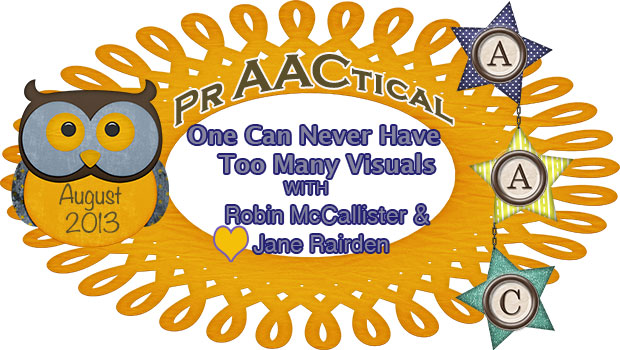
Today, we are so excited to have our new friends from the awesome blog lunchbuddiesplus sharing how and why they incorporate visual supports into their sessions. In their lunchbuddiesplus group sessions, the focus is on social skills and they find that visual supports make a huge positive impact. So as you get ready for back to school, think about the visual supports that will help make your goals and activities go smoothly.
 Robin McCallister is a Speech/Language Pathologist working at Mary Munford Elementary School in the Richmond City School district in Richmond, Va. She has 36 years of experience in the public schools. Currently, she spends most of the school day working withchildrenwho experience autism. She especially enjoys the social skills groups known at Mary Munford as “lunch buddies”. Visuals are a big part of social skills coaching and Robin knows that one can never have too many visuals! You are invited to visit her awesome blog at http://lunchbuddiesplus.wordpress.com.
Robin McCallister is a Speech/Language Pathologist working at Mary Munford Elementary School in the Richmond City School district in Richmond, Va. She has 36 years of experience in the public schools. Currently, she spends most of the school day working withchildrenwho experience autism. She especially enjoys the social skills groups known at Mary Munford as “lunch buddies”. Visuals are a big part of social skills coaching and Robin knows that one can never have too many visuals! You are invited to visit her awesome blog at http://lunchbuddiesplus.wordpress.com.
 Jana Rairden is an occupational therapist with Richmond Public Schools. She has been an OT for 32 years with practice in varying fields. For the past 17 years she has been an itinerant in the Richmond Public Schools in Richmond, Va. She is fortunate to work with creative professionals and in a school that supports innovative ideas. One of those is “lunch buddies” where in collaboration with speech language pathology the crucial daily activity of social skills is addressed.
Jana Rairden is an occupational therapist with Richmond Public Schools. She has been an OT for 32 years with practice in varying fields. For the past 17 years she has been an itinerant in the Richmond Public Schools in Richmond, Va. She is fortunate to work with creative professionals and in a school that supports innovative ideas. One of those is “lunch buddies” where in collaboration with speech language pathology the crucial daily activity of social skills is addressed.
One Can Never Have Too Many Visuals!
Thirty six years of working with children has taught me that there is no such thing as too many visuals in a therapy session or a social coaching experience. From beginning to end, visuals guide and support our students during therapy. When I say “our”, I am including my colleague, Jana Rairden, who is the Occupational Therapist at my school. We think that teamwork makes the dream work-but that’s another post. When Jana and I review our sessions we look at what worked and what did not work. What causes a session to be what we refer to as a “stinker”? We can always pinpoint a lack of visual support for a stinker of a session.
Why are visual supports so important? Let me refer you to Linda Hodgdon’s 25 Reasons to Use Visual Strategies with Students with Autism. She writes, “Whether it’s social conversation, understanding a written assignment, or being able to decipher more figurative language we all tend to use, if effective communication is our goal, we need to use more than our voices with this population. We need to use visual strategies too!”.
This Is How We Do It…….This Is What it Looks Like:
Reason #16 to use visual strategies: Students need to learn how to manage themselves when they get anxious or encounter a problem.
Our sessions begin by getting our bodies and brains ready to learn. We use yoga, BrainGym ® , and a variety of techniques to assist the students with self-regulation. Initially, we “walk” the students through each step necessary in determining their current state of regulation and help them choose the strategy that will help them get ready to learn. Our goal is for each student to “self-check” and “self-monitor”.
I created the Self-Check script using Custom Boards app for iPad. Note: Brain Eater is one of the Unthinkables from the Superflex ® curriculum at www.socialthinking.com The Learning Zone poster created by Kelly Hively is a free download.
Reason #20 to use visual strategies: Structure means organized and predictable. Strive for an environment that provides visual organization and information.
Token Tower ®, is one of the best purchases I have ever made. They provide visual structure for the session. I always write down what the students need to do to earn tokens, how many they need to earn and what choices they have if they earn the required amount of tokens.
If we see someone in the group who is struggling to earn tokens we give them a visual reminder by referring back to the list. The students also “see” what others are doing to earn tokens.
Reason #3 to use visual strategies: Sharing social information through written as well as verbal avenues helps students process and understand.
Sometimes we need a social story or script. The need may be for a reminder about “what to do if you don’t win”, or “expected behavior at a party” (we party a lot!) or “what to do if other’s cannot understand me”. If we are introducing a new concept such as “Flexible Thinking” we use visual scripts. Here are some examples that I created with Custom Boards app for iPad (I use this app everyday!).
Reason # 25 to use visual strategies: Linda Hodgdon writes that “one of the greatest benefits of making something visual is that you can keep it. Verbal language flies away. It disappears. Keeping visual information to review over and over helps students remember and understand. Visual tools reinforce verbal instruction and provide a second channel for learning and retention.”
We like to give the students visual supports to take with them to their classroom, to their home, and in the neighborhood.
Here is an example of what we call a “personal problem solver”.
In this example we used one of those PECS wallets and an inexpensive photo album from Target. The pictures are from Custom Boards app for iPad. Each student gets a “PPS” that is individualized. If the student needs coping strategies for when they are angry, we insert a visual that reads “There is always a way to feel better when you are angry” with pictures of several coping strategies.
We also love the Power Card Strategy. It is a visually based strategy used to connect an expected behavior or social skill to a students special interest. Developed by Elisa Gagnon, the Power Card is easy to make and highly motivating. Our students need a visual reminder that no matter what we are feeling there are expected behaviors. I made the Cookie Monster card for one of my students who loves all things Sesame Street. After we reviewed this card, he asked, “Do you think the other Sesame Street characters have strategies?” and my response was “Why, yes I do!”.
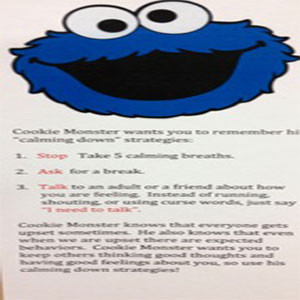
This power card uses a Super Hero to reinforce using coping strategies. Photo shows front and back.
We have BIG fun in our groups. When we play a game I make a visual to help our students remember the directions or, as with Cars UNO, to help remember the power of each card.
At my school I am so fortunate to have teachers who are open to using some of our visuals in the classroom for all the students.
This Problem Thermometer is just one example. It is used to help students identify the size of their problem and match an appropriate reaction. This idea came from www.autisminspirations.com
We start our sessions with visuals and students leave our sessions with visuals. I guarantee that visual supports will make life easier for you and your students!
My Best,
Robin McCallister
Filed under: PrAACtical Thinking
Tagged With: emotional regulation, guest blogger, lunch buddies, visual supports
This post was written by Robin Parker
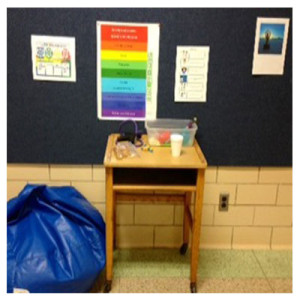
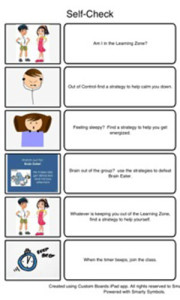
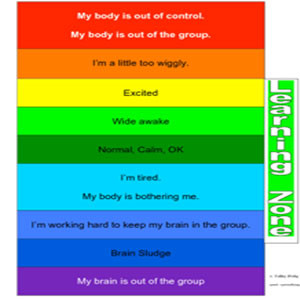
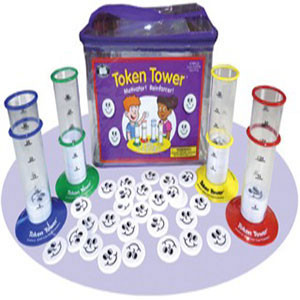
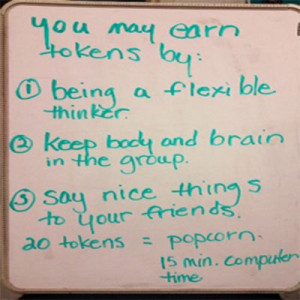
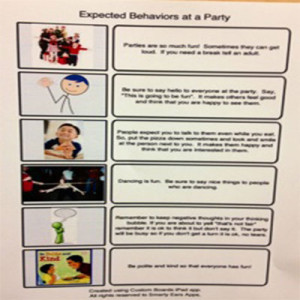
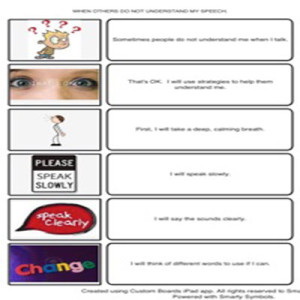
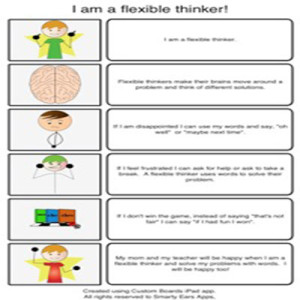
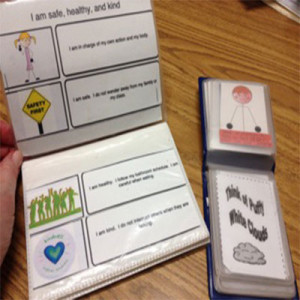

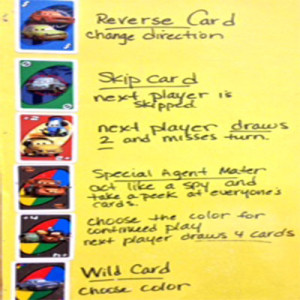



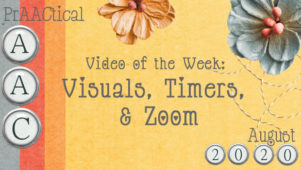
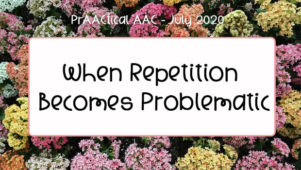
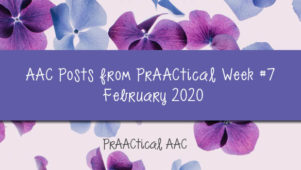
2 Comments
Hi! I am very interested in downloading the emotional regulation poster “Learning Zone” but I am not sure how. What should I do?
Thank you!
Kimberly Bailliard, OTR/L
School Based OT in Chapel Hill NC
Hi Kimberly! This was published awhile back so I don’t know if the authors will respond, but here is the direct link to the downloadable poster: https://drive.google.com/file/d/0B4qTMzRlgqGsQXN6NnRLdFZmaUk/view . If that doesn’t work, you may want to contact them through their site. 🙂